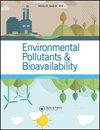Removal of fluoride from aqueous solution by TiO2 and TiO2–SiO2 nanocomposite
Q3 Chemical Engineering
引用次数: 24
Abstract
Abstract Adsorption plays an important role in the removal of pollutants such as fluoride from aqueous solutions. With the rapid development of environmental technology, TiO2 particle has become promising material to adsorb fluoride ion because of its low cost, non-toxic, good chemical stability, and good sorption ability. This work used sol-gel and hydrothermal synthesis methods to prepare TiO2 particles and load them onto SiO2 particles. The physicochemical properties such as heat stability, particle size, and surface area of the resulting TiO2 adsorbents were characterized with various analytical methods. In addition, their adsorption abilities to fluoride were determined under various conditions including different initial fluoride concentration, pH and coexisting ions. The maximum adsorption capacity of the TiO2 adsorbents can reach up to 94.3 mg/g. The adsorption isotherms of fluoride onto the TiO2 adsorbents can be closely described by the Langmuir model, suggesting the monolayer adsorption process.TiO2和TiO2–SiO2纳米复合材料去除水溶液中的氟化物
摘要吸附在去除水溶液中的氟化物等污染物方面发挥着重要作用。随着环保技术的快速发展,TiO2颗粒以其成本低、无毒、化学稳定性好、吸附能力强等优点,成为一种很有前途的氟离子吸附材料。本工作采用溶胶-凝胶和水热合成方法制备TiO2颗粒并将其负载到SiO2颗粒上。用各种分析方法表征了所得TiO2吸附剂的物理化学性质,如热稳定性、粒度和表面积。此外,在不同的氟初始浓度、pH和共存离子等条件下,测定了它们对氟的吸附能力。TiO2吸附剂的最大吸附量可达94.3mg/g。氟化物在TiO2吸附剂上的吸附等温线可以用Langmuir模型来描述,表明其是单层吸附过程。
本文章由计算机程序翻译,如有差异,请以英文原文为准。
求助全文
约1分钟内获得全文
求助全文
来源期刊
CiteScore
1.62
自引率
0.00%
发文量
0
审稿时长
1 months
期刊介绍:
Chemical Speciation & Bioavailability ( CS&B) is a scholarly, peer-reviewed forum for insights on the chemical aspects of occurrence, distribution, transport, transformation, transfer, fate, and effects of substances in the environment and biota, and their impacts on the uptake of the substances by living organisms. Substances of interests include both beneficial and toxic ones, especially nutrients, heavy metals, persistent organic pollutants, and emerging contaminants, such as engineered nanomaterials, as well as pharmaceuticals and personal-care products as pollutants. It is the aim of this Journal to develop an international community of experienced colleagues to promote the research, discussion, review, and spread of information on chemical speciation and bioavailability, which is a topic of interest to researchers in many disciplines, including environmental, chemical, biological, food, medical, toxicology, and health sciences.
Key themes in the scope of the Journal include, but are not limited to, the following “6Ms”:
Methods for speciation analysis and the evaluation of bioavailability, especially the development, validation, and application of novel methods and techniques.
Media that sustain the processes of release, distribution, transformation, and transfer of chemical speciation; of particular interest are emerging contaminants, such as engineered nanomaterials, pharmaceuticals, and personal-care products.
Mobility of substance species in environment and biota, either spatially or temporally.
Matters that influence the chemical speciation and bioavailability, mainly environmentally relevant conditions.
Mechanisms that govern the transport, transformation, transfer, and fate of chemical speciation in the environment, and the biouptake of substances.
Models for the simulation of chemical speciation and bioavailability, and for the prediction of toxicity.
Chemical Speciation & Bioavailability is a fully open access journal. This means all submitted articles will, if accepted, be available for anyone to read, anywhere, at any time. immediately on publication. There are no charges for submission to this journal.

 求助内容:
求助内容: 应助结果提醒方式:
应助结果提醒方式:


